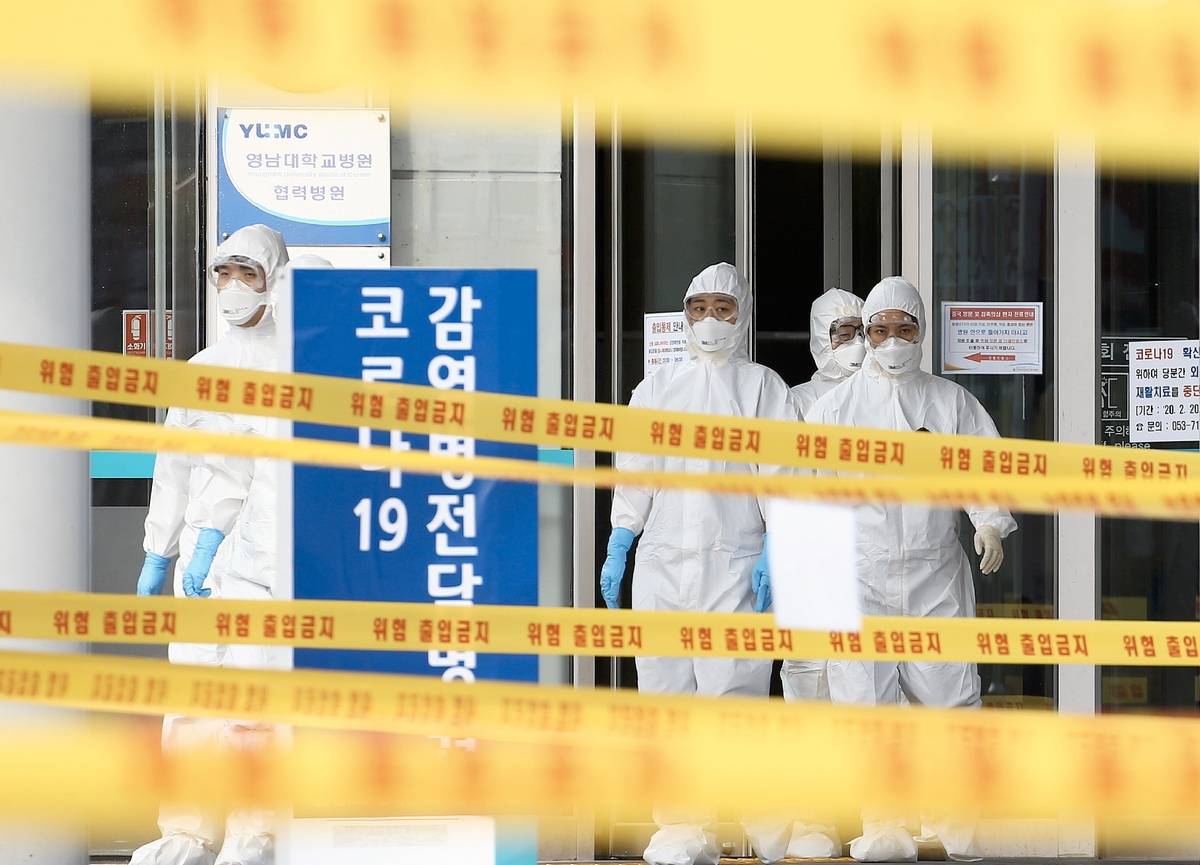The global death toll from the new coronavirus epidemic surpassed 3,000 on Monday after more people died at its epicentre in China, as cases soared around the world and US officials faced criticism over the country’s readiness for an outbreak.
(Coronavirus outbreak: All the latest updates)
The virus has now infected more than 88,000 people and spread to more than 60 countries after first emerging in China late last year.
South Korea, the biggest nest of infections outside China, reported nearly 500 new cases on Monday, bringing its total past 4,000.
With fears of a pandemic on the rise, the World Health Organization urged all countries to stock up on critical care ventilators to treat patients with severe symptoms of the deadly respiratory disease.
The rapid spread of the coronavirus has raised fears over its impact on the world economy, causing global markets to log their worst losses since the 2008 financial crisis.
China’s economy has ground to a halt with large swathes of the country under quarantine or measures to restrict travel.
Other countries have started to enact their own drastic containment measures, including banning arrivals from virus-hit countries, locking down towns, urging citizens to stay home and suspending major events such as football matches or trade fairs.
(Coronavirus: Everything you need to know about the Covid-19 Wuhan virus outbreak)
In a stark example of growing global anxiety, the Louvre – the world’s most visited museum – closed on Sunday after staff refused to work over fears about the virus.
China reported 42 more deaths on Monday – all in central Hubei province. The virus is believed to have originated in a market that sold wild animals in Hubei’s capital, Wuhan.
The death toll in China alone rose to 2,912, but it is also rising abroad, with the second highest tally in Iran with 54, while the United States and Australia had their first fatalities from the disease over the weekend.
The WHO says the virus appears to particularly hit those over the age of 60 and people already weakened by other illness.
It has a mortality rate ranging between two and five percent – much higher than the flu, at 0.1 percent, but lower than another coronavirus-linked illness, SARS, which had a 9.5 percent death rate when it killed nearly 800 people in 2002-2003.
But infections are also rising faster abroad than in China now, as the country’s drastic measures, including quarantining some 56 million people in Hubei since late January, appear to be paying off.
After an increase on Sunday, China’s National Health Commission reported 202 new infections on Monday, the lowest daily rise since late January. There have been more than 80,000 infections in the world’s most populous country.
By contrast, infections are soaring elsewhere.
Four more people died in South Korea, taking its toll to 22.
Infection numbers have surged in recent days and the country’s central bank has warned of negative growth in the first quarter, noting the epidemic will hit both consumption and exports.
The figures are expected to rise further as authorities test more than 260,000 people associated with the Shincheonji Church of Jesus, a religious group often condemned as a cult that is linked to more than half the cases.
Infections nearly doubled over the weekend in Italy, Europe’s hardest hit country with nearly 1,700 cases.
Rome said Sunday it would deliver 3.6 billion euros ($4 million) in emergency aid to sectors affected by the virus.
President Donald Trump has downplayed concerns of a major outbreak in the US but his government has come in for criticism over its response to the threat.
Vice President Mike Pence and Health Secretary Alex Azar defended the administration’s handling of the virus, while seeking to reassure Americans and promising to make up for shortfalls in virus testing kits.
“We could have more sad news, but the American people should know the risk to the average American remains low,” Pence told CNN.
The assurances came a day after officials confirmed that a man in his 50s had died in northwestern Washington state.
He was one of a handful of people with no known links to global hot zones to have contracted the virus – indicating that the pathogen was now likely spreading in communities.
“We will see more cases,” Azar said. “But it’s important to remember, for the vast majority of individuals who contract the novel coronavirus, they will experience mild to moderate symptoms.”

